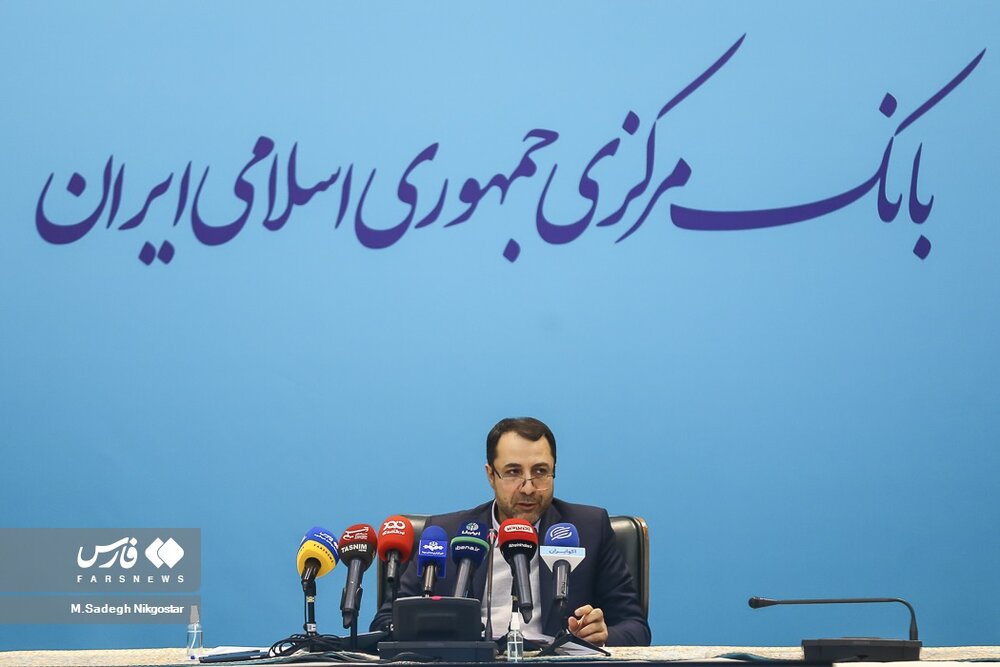‘Directing bank credits towards production a major plan of CBI’

TEHRAN- Directing the banking credits and facilities towards production is a major plan of the Central Bank of Iran (CBI) in the current Iranian calendar year (began on March 21), the bank’s governor said in a press conference on Sunday.
Ali Saleh-Abadi announced that 900 trillion rials (about $3.1 billion) of facilities have been paid to the knowledge-based companies in the first eight months of the current year (March 21-Novemebr 21), while the figure was 660 trillion rials (about $2.275 billion) in the same period of time in the past year.
It should be mentioned that the current Iranian calendar year is named “Knowledge-based Production and Job Creation”.
The central bank governor also noted that the CBI has prepared a reform program for each bank regarding the financial structure of that bank, based on which the financial structure of the banks and their facilities system will be improved.
He said that 26 quadrillion rials (about 89.655 billion) of facilities have been paid by the banking system in the first eight months of the present year, which was 44.7 percent higher than the figure in the same time span of the previous year.
The official also referred to controlling the balance sheets of the banks as the other major action that the CBI is seriously pursuing in the current year.
Controlling liquidity, inflation growth seriously followed up by CBI
Saleh-Abadi further mentioned the liquidity and inflation growth, and emphasized that the CBI is seriously following up on controlling the growth of liquidity and inflation.
He said that the liquidity growth has been on a falling trend since the start of the current administration’s incumbency and also in the current year, as the liquidity growth was 42.8 percent at the beginning of this government’s work, while it is 34.3 percent at the present.
The official stated that a committee has been set up in the CBI that holds weekly sessions on the issue of controlling liquidity growth in the country.
“Our plan is that the liquidity growth will fall below 30 percent by the end of the current year, and we have some programs to achieve this goal. For example, at the beginning of the year, a committee was established between the CBI, Planning and Budget Organization (PBO), and the Ministry of Finance and Economic Affairs to work on this issue”, the CBI governor further announced.
As the result, negative liquidity growth was achieved in the first month of the current year, he added.
Foreign currency, trade policies should be completely aligned
Elsewhere in the press conference, the CBI governor said that the foreign currency policies and trade policies of the country should be completely aligned, and it is among the major programs of the central bank.
This issue is seriously followed up through a joint task force between the CBI and the Ministry of Industry, Mining and Trade, the official reiterated.
Trades in NIMA increases 64% this year
In terms of the situation of the foreign currency exchange market, Saleh-Abadi said “There are three forex markets in the country: NIMA system, integrated market, and informal market, and most of the transactions are done in the NIMA system.”
He said trades worth $32.1 billion were done in NIMA this year, with 64 percent growth from the $19.6 billion worth of trades in this system in the same time span of the previous year.
NIMA, which seeks to boost transparency, is a chance for importers to supply their required foreign currency without specific problems and for exporters to re-inject their earned foreign currency to the domestic forex market. It was inaugurated to allow exporters of non-oil commodities to sell their foreign currency earnings to importers of consumer products.
In late May 2019, the Central Bank of Iran unveiled a directive package that provided the country’s exporters with guidelines about how they should re-inject their foreign currency incomes into the country’s economy.
In the Sunday press conference, the CBI governor also announced that the value of trades in the integrated market has risen 45 percent to $2.1 billion in the current year.
Considering that a significant part of the transactions is done in the NIMA system and the integrated market, these two markets should be considered in the analysis, he noted.
And finally answering a question about the latest situation of digital rial, Saleh-Abadi stated that this matter is still in the trial stage.
